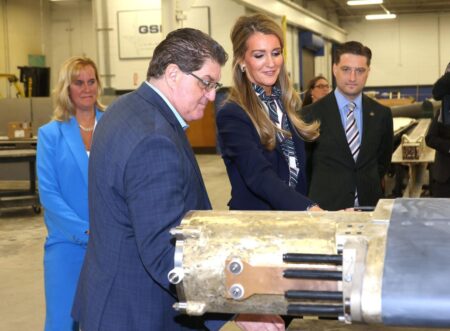Health and wellness benefits have become a critical part of the employee experience in recent years. With benefit offerings affecting how well a business attracts potential employees and retains current ones, determining the right selection of perks directly impacts the workforce a company is able to cultivate.
Knowing exactly which offerings will positively impact employees’ lives and which benefits will go unused can be difficult for leaders to accurately ascertain. To help, 20 Forbes Business Council members share questions company leaders should ask themselves when selecting or removing health benefits, as well as how they can ensure they continuously offer employees the best options.
1. How does this offering align with our company values?
When deciding which health and wellness benefits to offer, leaders should ask themselves how each offering aligns with and furthers company values. As part of an overall compensation package, employee benefits help differentiate employers from their competitors. Every connection to company values drives deeper engagement and value for not only prospective employees but also current employees. – J. Todd Phillips, Parson Partners
2. Are employees actually using these benefits?
Leaders must determine if employees are actually using and valuing these benefits. Data, not assumptions, should drive decision making. Regularly review utilization rates and gather direct employee feedback to cut what’s ignored and enhance what truly supports well-being. Simplifying choices to match real needs leads to higher engagement and a healthier, more satisfied workforce. – Pranav Dalal, Office Beacon
3. What do employees truly need and value?
Company leaders should ask, “What do employees truly need and value?” Too many options can be overwhelming, leading to low participation. A targeted approach—such as employee surveys or feedback sessions—ensures benefits are relevant, motivating and practical. This not only optimizes resources but also fosters a healthier, more engaged workforce. – Bojan Ilic, Swiss Security Solutions LLC
4. Which benefits address employees’ most pressing needs?
Asking which benefits directly address your employees’ most pressing needs prioritizes impact over volume. By focusing on core challenges like mental health or flexibility, leaders avoid overwhelming staff with irrelevant perks. This targeted approach increases engagement, ensures resource efficiency and fosters a healthier, more satisfied workforce, maximizing the value of the wellness program. – Reco McCambry, Novae
Forbes Business Council is the foremost growth and networking organization for business owners and leaders. Do I qualify?
5. Does this benefit truly improve employees’ daily lives?
Leaders should ask whether a benefit truly improves their employees’ daily lives. Prioritize impact over quantity by offering fewer, high-value benefits that employees will actually use to foster engagement. When benefits align with real needs like mental health support, financial wellness and flexible work, they drive retention and productivity. The goal isn’t more options but meaningful, accessible support. – Aleesha Webb, Pioneer Bank
6. Which benefits enhance employee well-being and productivity?
Company leaders should ask, “Which benefits truly enhance our employees’ well-being and productivity?” By focusing on quality over quantity, they can ensure their offerings are impactful, relevant and more likely to engage employees effectively. – Tim Pratte, Selerix Systems
7. Do our benefits evolve with employees’ changing needs?
One question I would ask is, “Are we offering benefits that evolve with employees’ changing needs?” Static wellness programs have become outdated. Leaders should ensure that benefits adapt to workforce shifts — like hybrid work environments or increasing mental health awareness — so employees always have access to the most relevant and impactful options. – Khurram Akhtar, Programmers Force
8. Would I actually use this?
Company leaders should ask themselves if they would actually use this. If a benefit sounds great on paper but collects dust in reality, it’s time to rethink it. The best perks aren’t about quantity; they’re about impact. Poll employees, cut the fluff and invest in benefits that truly support well-being. A perk unused is a perk wasted. – Dr. Christina Carter, Her Practice®
9. Does this benefit directly improve employee well-being and engagement?
Leaders should ask whether a benefit directly improves employee well-being and engagement. This ensures offerings are relevant, practical and valued. By prioritizing impact over quantity, companies simplify choices, boost utilization and enhance overall workplace wellness. Streamlining benefits to align with real needs fosters a healthier, more engaged workforce without overwhelming employees. – Stephen Nalley, Black Briar Advisors
10. Does this benefit directly meet a documented employee need?
Determine if a benefit meets a documented employee need in a straightforward way. Rather than opting for popular perks, prioritize benefits that help solve main stressors, such as mental health programs for remote workers. Clarity and relevance increase engagement by eliminating clutter and providing a measurable effect. – Adnan Ghaffar, CodeAutomation.AI LLC
11. Does the program support the well-being of employees or the business?
When choosing employee wellness program benefits, one question company leaders should ask is whether the program supports the well-being of the person or the well-being of the business. If we are creating a culture of business first and people second, the wellness program will not benefit anyone. When a company truly values and supports the wellness of its people, the program reflects that. – Ariya Malek, Educational Awakening Center
12. Which benefits do employees value most?
Leaders should ask, “Which benefits do employees value most? Asking employees which benefits they most value via periodic surveys can help employers ensure they are offering benefits that will yield the highest ROI from an employee values perspective. This process doesn’t have to be a guessing game. Having employees rank the benefits they value most helps employers align benefit offerings with the highest perceived value. – Teah Corley, EmployerAdvocates
13. Can employees access this benefit quickly and easily?
Benefits only work if employees can actually use them. If signups are complex or details are unclear, engagement drops. Leaders should ask, “Can employees access this quickly and easily?” A user-friendly system, clear instructions and ongoing communication make all the difference. When benefits are simple to use, employees are more likely to engage, leading to higher satisfaction and well-being. – Sabeer Nelliparamban, Tyler Petroleum Inc.
14. Does this benefit make their lives easier or harder?
We do our best to simplify all of our operations. This also includes our approach to benefits because it helps us stay effective. We always ask, “Does this make life easier or just add complexity?” For us, the answer is flexibility, like letting parents adjust their hours, because real support is less about the number of perks and more about showing that we trust and care about our employees. – Rytis Lauris, Omnisend
15. Would employees’ families find value in these benefits?
Leaders should start by thinking of employees’ loved ones and asking if they would find value in these benefits. If a benefit supports employees’ well-being at home, it’s more likely to drive engagement at work. Pair this with peer appraisals to survey employees on what they truly use and appreciate. This dual approach ensures offerings remain relevant, reducing overwhelm while maximizing impact on productivity and morale. – Dr. Clemen Chiang, Spiking
16. Which three benefits would most improve employees’ well-being?
Company leaders should ask, “If we had to cut all but three benefits, which ones would truly improve our employees’ well-being?” This forces a focus on impact over quantity, ensuring benefits are practical, valued and real engagement drivers rather than something that creates choice paralysis. – Sam Nelson, Downstreet Digital
17. Does this benefit align with team needs and long-term goals?
Ask, “Does this benefit align with our team’s core needs and long-term goals?” Focus and clarity drive success, offering targeted, high-impact benefits that prevent overwhelm and boost engagement. Prioritizing quality over quantity ensures resources go where they will create the most value. – Michael Lanctot, YoungNRetired
18. Do these benefits drive top performance or check a box?
Company leaders should determine whether a benefit drives peak performance or just checks a box. Elite organizations optimize for longevity, cognitive sharpness and resilience. Benefits should enhance human capital, not just placate. Strip out the noise and invest in perks that will compound like top-tier healthcare, performance coaching and longevity perks. High-impact employees demand high-leverage benefits. – Yves Remmler, Endeavor Elements, Inc.
19. Do these benefits serve a wide range of employees?
I think about employees at different life stages, not just one group. What a recent graduate needs is completely different from what a working parent or someone nearing retirement values. I try to make sure benefits serve a wide range of employees rather than just the loudest voices in the room. A great package should evolve with employees and not leave certain groups behind. – Ran Ronen, Equally AI
20. What will be most important to employees in the future?
Leaders should ask, “What will be most important to my unique group of employees over the next several years?” As a founder concerned with the wellness of my employees and their families, I focus on culture and benefits. From surveys and conversations, I’ve seen priorities shift for workers, with cost, service, quality and convenience becoming more important and that guides my decisions. Today, many people serve not only themselves but also their kids and aging parents! – Jerry Cahn, Age Brilliantly
Read the full article here











